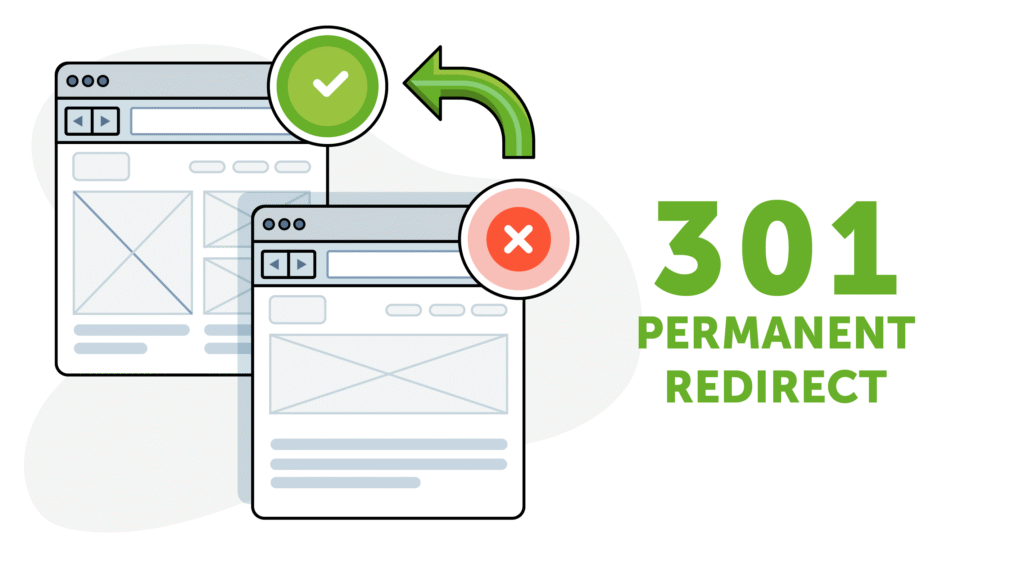Why a Website Redesign Needs More Than a Fresh Look
Redesigning your website can feel exciting. You’re ready for a new look, faster performance, and a better experience for your visitors. But here’s the thing—many businesses rush through the process, hit “publish,” and then realize later that something crucial was missed.
A great redesign isn’t just about design. It’s about strategy, structure, performance, and how well everything works together. If even one of those pieces is off, it can impact your traffic, rankings, and conversions.
Think of this checklist as your safeguard. The final sweep before you go live. Because once your new website is out there, you want it to work hard for you from day one.
1. Clear Goals and Metrics
Before you touch a single pixel, define what success looks like. Do you want more leads? Better SEO performance? Higher engagement? Having clear, measurable goals helps you design with purpose.
Create baseline data from your old site first—conversion rates, traffic sources, and bounce rates. That way, you can track whether the redesign is delivering results later.
2. Updated Brand Messaging
A redesign is the perfect time to revisit your message. Does your website clearly explain who you are and what makes you different? Every headline, button, and call-to-action should reinforce that.
If your business has evolved, make sure your content reflects it. Visitors should understand what you do within seconds.
3. SEO Audit and Redirect Plan

This is one of the most overlooked areas. Redesigns often break SEO progress if redirects aren’t handled correctly. Before launching, create a full list of your current URLs and map them to new ones if they’re changing.
Set up 301 redirects for every important page. Test them before launch. A single broken link can cost valuable search traffic.
If you need help building a strong SEO foundation during your redesign, explore BrandBolt’s Local SEO services for ongoing optimization and technical support.
4. Fast Loading Speed
Page speed directly affects user experience and search rankings. Optimize everything. Compress images, enable browser caching, and reduce unnecessary code or plugins.
Use Google PageSpeed Insights to test your site before launch. Aim for a load time under three seconds across all devices.
5. Mobile-First Design
More than half of your visitors will come from a smartphone. That means your design, navigation, and content layout must be built for small screens first.
Check every element—buttons, forms, and menus—to ensure they’re easy to tap and navigate with one thumb.
6. Strong Visual Hierarchy
Good design leads the eye naturally. Make sure your headlines stand out, your CTAs are clear, and your spacing feels balanced.
Avoid clutter. Every page should have one main focus, and every element should support that focus.
7. On-Brand Color and Typography
Your design should instantly feel like your brand. Use consistent colors, fonts, and image styles across all pages.
Keep readability in mind. High contrast between text and background improves accessibility and user comfort.
8. Clear Navigation Structure
Your visitors shouldn’t have to think twice about where to click next. Simplify your menus, group similar pages, and make sure every link works properly.
Test navigation on both desktop and mobile devices. The smoother the experience, the more likely users are to stay longer.
9. Optimized Content
Redesigns are the perfect moment to review and refresh your website copy. Eliminate outdated information, add new services, and write with clarity.
Use concise headlines, short paragraphs, and action-oriented CTAs. If SEO is a focus, weave keywords naturally into your copy.
For ongoing optimization and visibility, consider BrandBolt’s Website Development services, which integrate SEO-friendly design and performance-focused structure from the ground up.
10. Functional Contact Forms
Check every form on your site—contact, quote request, or newsletter signup. Make sure they actually send submissions to the correct inbox.
Test them multiple times before launch. Broken forms can silently cost you valuable leads.
11. Secure Hosting and SSL Certificate
Security is non-negotiable. An SSL certificate protects your visitors’ data and helps build trust. It also affects your search rankings.
Make sure every page shows “https://” in the address bar. Even a single insecure element can trigger browser warnings.
12. Analytics and Tracking Setup
Before going live, install Google Analytics, Google Tag Manager, and any conversion tracking pixels (like Meta or LinkedIn).
Without these, you can’t measure how your new site is performing—or what needs improvement.
13. Accessibility Compliance
Web accessibility ensures your site can be used by everyone, including people with disabilities. Use proper contrast ratios, image alt text, and descriptive link text.
Following accessibility standards isn’t just good ethics—it expands your audience and helps SEO too.
14. Quality Assurance Testing
Before launch, test everything. Buttons, links, forms, sliders, videos, and payment gateways if you have e-commerce.
Have multiple people review the site on different browsers and devices. Fresh eyes often catch small details you might miss.
15. Backup and Launch Plan
Always create a complete backup of your new website before going live. That includes files, databases, and configuration settings.
Schedule your launch during off-peak hours if possible. That way, if something unexpected happens, fewer users are affected while you fix it.
Key Takeaways
- Define goals and metrics before designing anything
- Don’t skip SEO redirects or performance checks
- Design mobile-first for a seamless user experience
- Test every feature before launch
- Track results and continue optimizing post-launch
Final Thoughts
Your website redesign is more than a facelift. It’s an opportunity to elevate your brand and create a smoother experience for your audience.
By following this checklist, you’re setting your launch up for success—fewer surprises, stronger performance, and measurable results.
If you want expert help building or auditing your redesigned website, BrandBolt specializes in high-performing, conversion-focused website development and SEO optimization. The right launch plan can turn your website into one of your most powerful growth tools.
Are you confident your new website checks all the boxes?
Common Questions
How long does a full website redesign take?
For most small to mid-sized businesses, it takes 2 to 3 months depending on content, design complexity, and revisions.
Should I keep my old content or start fresh?
Keep content that performs well, but update or remove anything outdated. A redesign is a great time to refine your messaging.
Do I need a developer for a redesign?
Yes. Professional developers ensure your new design works properly across all browsers, devices, and screen sizes.
What’s the best time to launch a new website?
Avoid weekends or high-traffic periods. Launching during business hours allows faster troubleshooting and monitoring.




